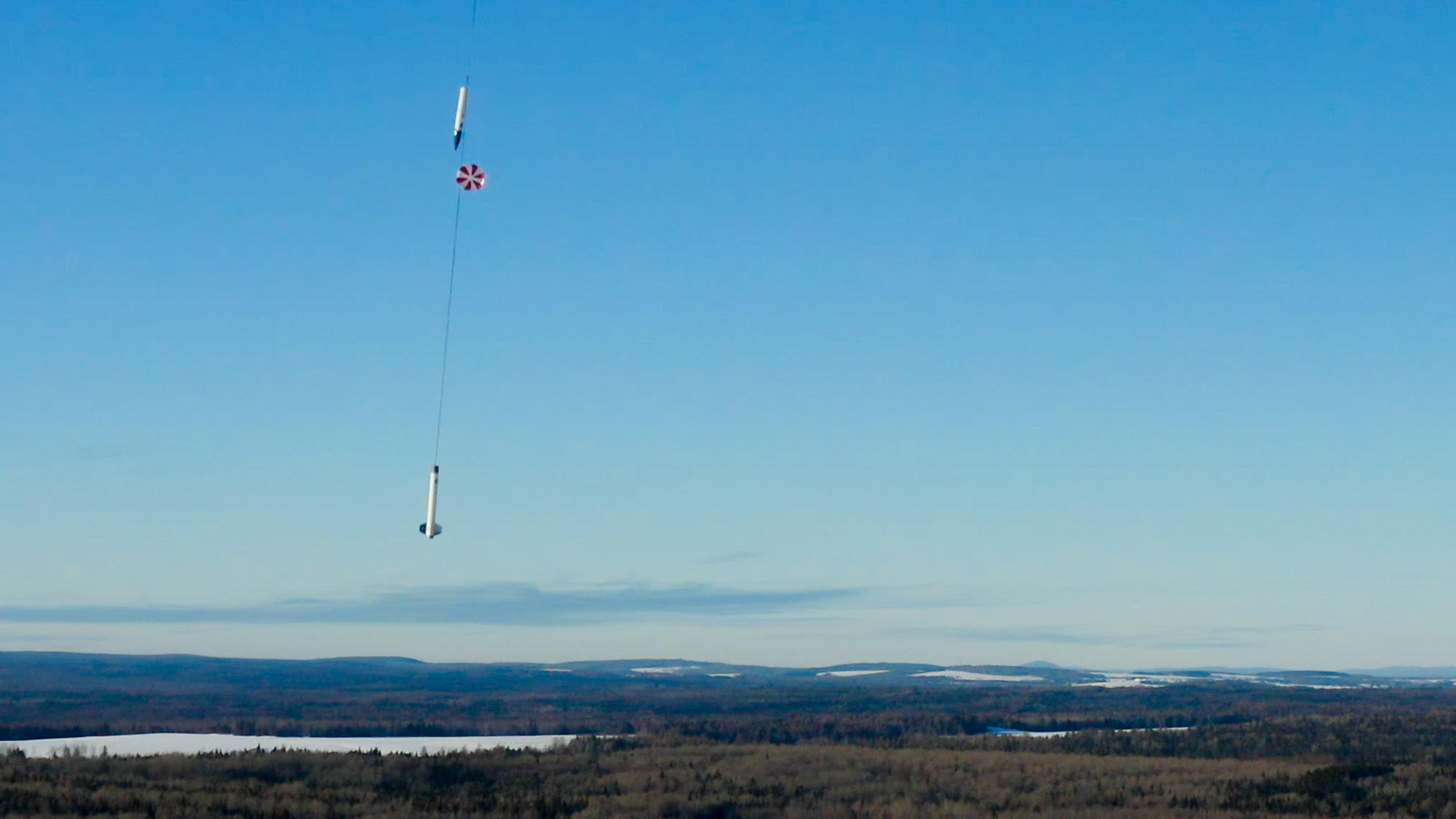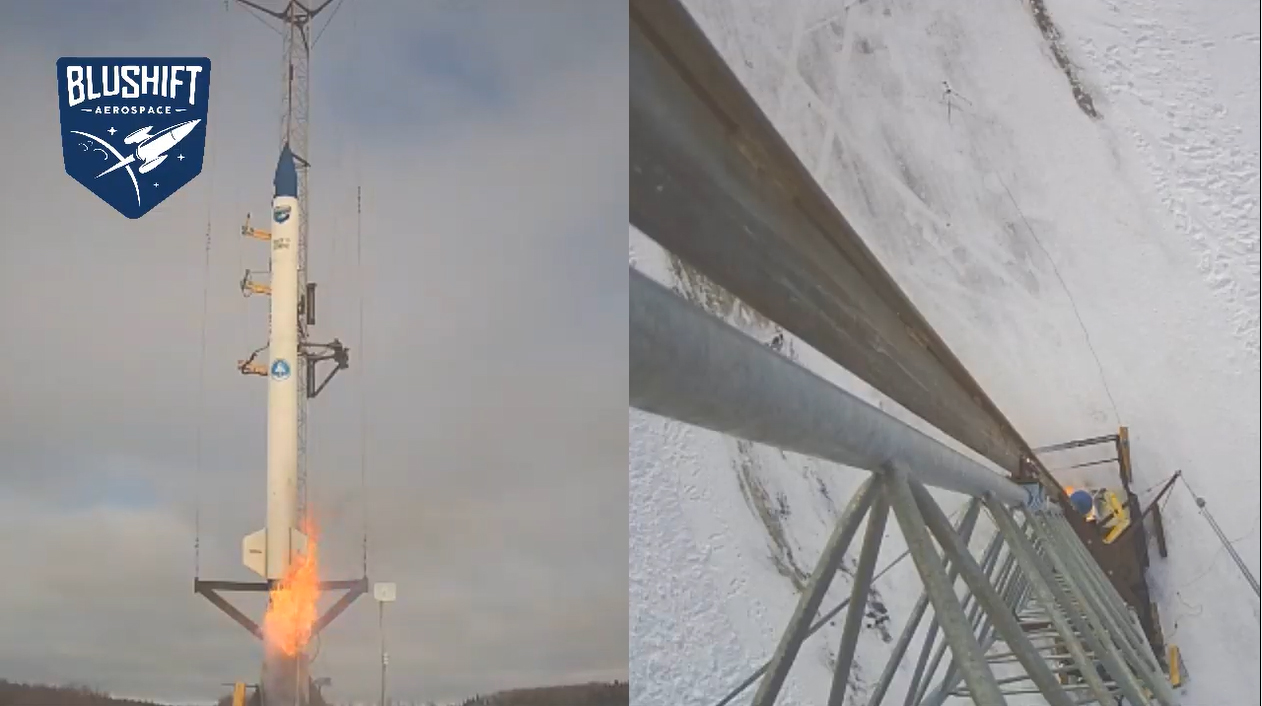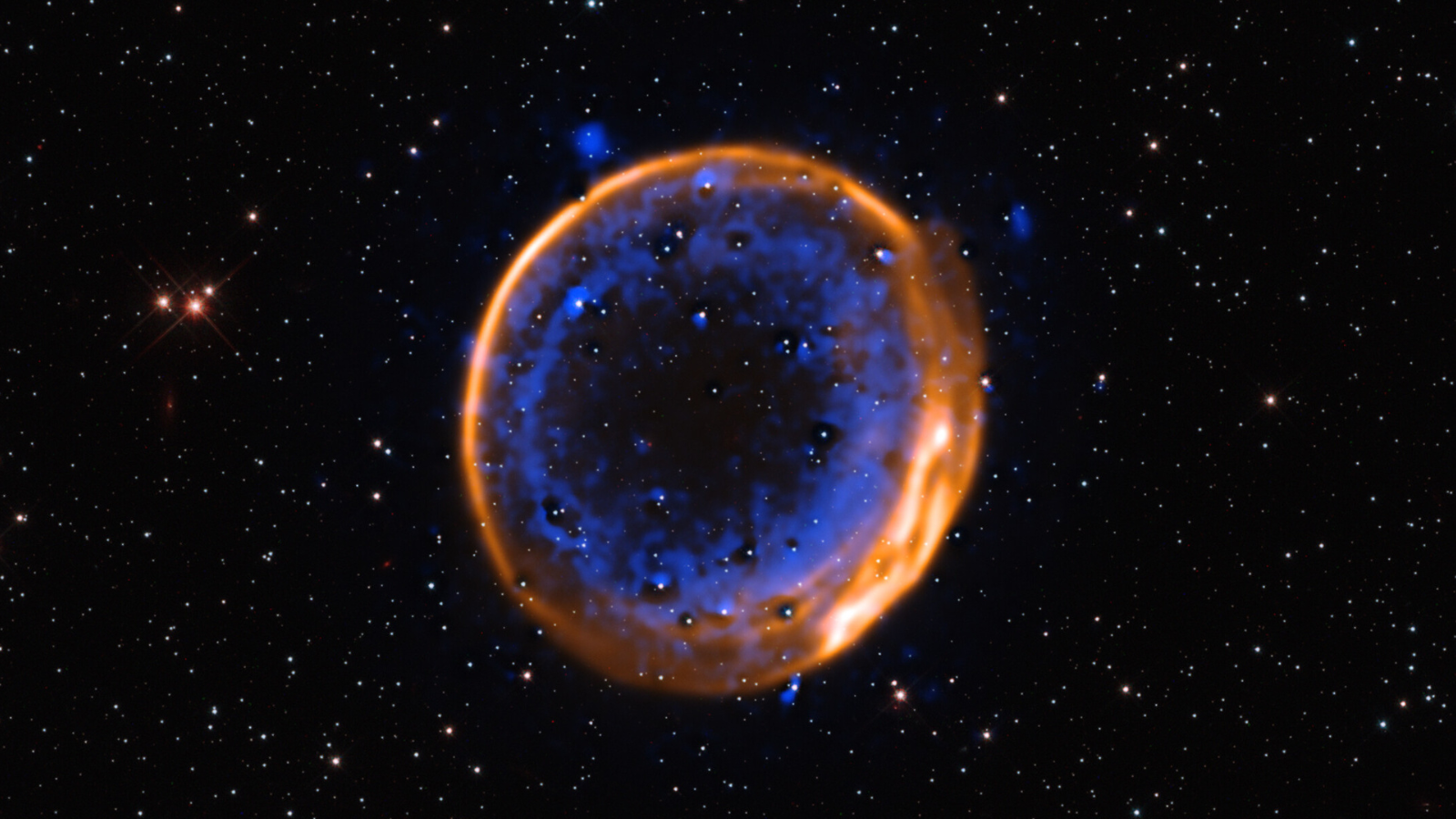Startup bluShift Aerospace launches its 1st commercial biofuel rocket from Maine
The low-altitude launch is the world's first rocket flight from Maine.
A small rocket billed as the world's first commercial booster powered by biofuel has launched from Maine.
The Brunswick-based startup bluShift Aerospace launched its first rocket prototype, called Stardust 1.0, on Sunday (Jan. 31), despite freezing temperatures and two false starts. The rocket didn't reach space (or even a mile up), but marked a major milestone for a company aiming to launch bespoke missions tailored for tiny satellites.
"It went perfectly," bluShift CEO Sascha Deri told reporters after the launch, which lifted off Sunday afternoon from a snow-covered runway at the Loring Commerce Center in Limestone, Maine. "It landed right where we were hoping for and where we were planning for. It couldn't have been better than that."
Stardust 1.0 is a small sounding rocket powered by a "bio-derived" solid fuel to act as as a testbed for future bluShift rockets capable of launching tiny nanosatellites. It stands 20 feet tall (6 meters) and can carry 17 lbs. (8 kilograms) of payload.
Video: Meet the bluShift Aerospace team for smallsat rocket launches

It took several tries for bluShift to launch Stardust 1.0. A launch attempt on Jan. 14 was prevented by bad weather. Then on Sunday, a pressure issue with an oxidizer valve prevented the rocket from lifting off, even as its solid fuel ignited.
"It's not launching!" someone could be heard saying in bluShift's live webcast. A second attempt about 90 minutes later failed when the rocket's igniter didn't kick off as planned. The company also battled freezing temperatures and network issues during the countdown.
Breaking space news, the latest updates on rocket launches, skywatching events and more!
But the third time was the charm when, in mid-afternoon, Stardust 1.0 launched off its support rail, flew over 4,000 feet (1,219 m) up and then deployed a parachute to fall back to Earth. A drogue chute did pop free unexpectedly and was retrieved by two small girls and their parents using a snowmobile (several of which were on hand from volunteers to recover the rocket), Deri said.
"We couldn't be more delighted than [with] what happened today," Deri said.
Founded in 2014, bluShift Aerospace is a team of eight people who aim to launch tiny satellites into polar orbits from the coast of Maine. The company is targeting customers with nanosatellites who want more flexibility or control over their orbits that may be unavailable by riding as a secondary payload with another launch provider like SpaceX or Rocket Lab.
"We want to be the Uber to space providing that true nano-launch service for nanosatellites," Deri said before the launch.

To do that, the company is planning two larger suborbital rockets, called Stardust 2.0 and its bigger cousin the Starless Rogue to provide up to 6 minutes of weightlessness for payloads at a cost of up to $300,000. A planned orbital rocket, called Red Dwarf, would then launch nanosatellites of up to 66 lbs. (30 kg to orbit for about $60,000 a kilogram.
bluShift's rocket engine, a hybrid of solid and liquid propellant called the Modular Adaptable Rocket Engine for Vehicle Launch (MAREVL), uses a proprietary solid biofuel that the company says is non-toxic, carbon neutral and "can be cheaply sourced from farms across America." It uses nitrous oxide bubbled with oxygen as an oxidizer, Deri said.

Sunday's Stardust 1.0 launch carried three primary payloads: a cubesat built by students of Falmouth High School students with a GoPro camera, radio transmitter and sensors onboard; an experiment by Kellogg's Research Labs of Nashua, New Hampshire to test the vibration-dampening effects of nitinol, a nickel-titanium shape memory alloy; and a cubesat enclosure filled with stroopwafels, the Dutch wafer cookies, for the software development company Rocket Insights as an homage to their Amsterdam-based parent company Dept.
The rocket is also carried some bluShift pens for future investors.
Deri said bluShift hoped to use Sunday's launch to draw investor interest as the company seeks to raise $650,000 to fund the development of Stardust 2.0 and its successors. The company's core team members invested $500,000 of their own money into the project and won a $125,000 NASA grant, along with funds from the Maine Technology Institute, to fuel their effort so far.
The company is also looking for a new launch site Maine's coast to handle its larger rockets. If all goes well, the bluShift could launch its first Stardust 2.0 rocket by the end of the year, Deri said after Sunday's launch.
"We hope to demonstrate to the world that Maine is open for aerospace."
Email Tariq Malik at tmalik@space.com or follow him @tariqjmalik. Follow us @Spacedotcom, Facebook and Instagram.
Join our Space Forums to keep talking space on the latest missions, night sky and more! And if you have a news tip, correction or comment, let us know at: community@space.com.

Tariq is the Editor-in-Chief of Space.com and joined the team in 2001, first as an intern and staff writer, and later as an editor. He covers human spaceflight, exploration and space science, as well as skywatching and entertainment. He became Space.com's Managing Editor in 2009 and Editor-in-Chief in 2019. Before joining Space.com, Tariq was a staff reporter for The Los Angeles Times covering education and city beats in La Habra, Fullerton and Huntington Beach. In October 2022, Tariq received the Harry Kolcum Award for excellence in space reporting from the National Space Club Florida Committee. He is also an Eagle Scout (yes, he has the Space Exploration merit badge) and went to Space Camp four times as a kid and a fifth time as an adult. He has journalism degrees from the University of Southern California and New York University. You can find Tariq at Space.com and as the co-host to the This Week In Space podcast with space historian Rod Pyle on the TWiT network. To see his latest project, you can follow Tariq on Twitter @tariqjmalik.
